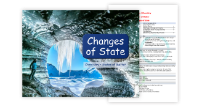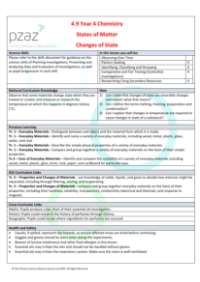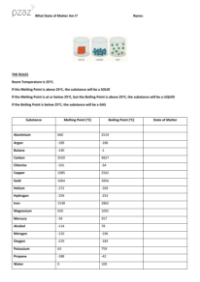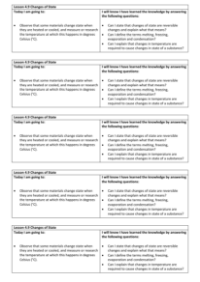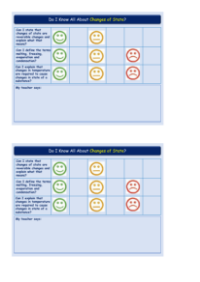Changes of State - Teacher Explanation

Science Resource Description
Welcome to lesson 4.9, Changes of State, within the Year 4 curriculum on States of Matter. This lesson aims to help pupils understand how certain materials change state when heated or cooled, and the temperatures at which these changes occur, measured in degrees Celsius. Safety is a key concern, as pupils will be handling liquids that can cause slip hazards, so spills must be cleaned promptly. Safety goggles are recommended, and gloves should be considered for those with skin sensitivities. Additionally, the handling of food items requires awareness of potential allergies, particularly lactose intolerance, and the use of essential oils necessitates caution for those with respiratory sensitivities.
The lesson includes an engaging demonstration where pupils will explore whether saltwater and freshwater freeze at the same rate. They will observe the preparation of an ice cube tray with both types of water and predict the outcome. The scientific explanation is that saltwater contains more matter due to the dissolved salt, which means it requires more energy loss to freeze compared to freshwater. The lesson also involves a hands-on activity where pupils make ice cream, learning how a liquid turns into a solid through the process of freezing. They will need various ingredients and equipment, including milk, sugar, vanilla essence, and ice, among others. The science behind the activity is explained in terms of heat transfer and the change of state from liquid to solid. This lesson not only covers scientific concepts but also incorporates cross-curricular links to maths, history, and geography, making it a comprehensive and interactive experience for Year 4 pupils.
